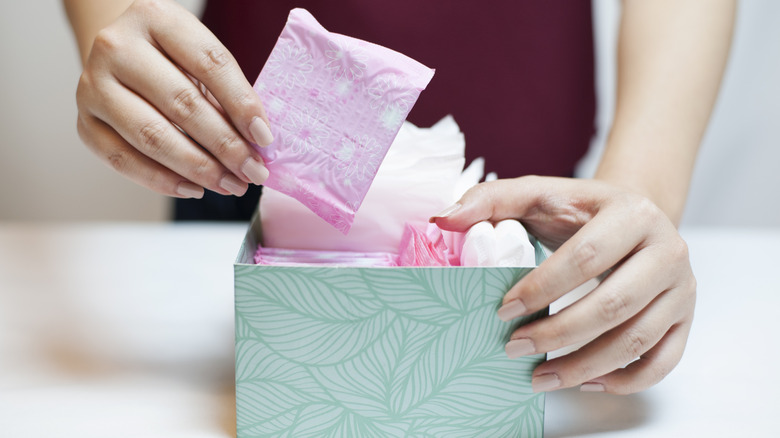How To Reduce Your Risk Of Toxic Shock Syndrome
Toxic shock syndrome (TSS) is a type of infection caused by various types of harmful bacteria that release toxins into the bloodstream, leading to a host of symptoms and complications, as per Johns Hopkins Medicine. The most common bacteria associated with this syndrome are Clostridium sordellii, Staphylococcus aureus, and Streptococcus pyogenes. While most people think of tampon use as causing TSS, the condition actually has a variety of causes. TSS-causing bacteria can spread through open wounds, multiply in people with weak immune systems, and can be the result of intravenous drug use or other infections, such as pneumonia.
The most common risk factors for TSS include super-absorbent tampons, the use of a diaphragm or contraceptive sponge, a recent miscarriage or abortion, wounds from surgery, and skin infections (per Johns Hopkins Medicine). There are also a number of symptoms associated with the condition, including vomiting, diarrhea, high fever, fatigue, flu-like symptoms, and difficulty breathing. That being said, the symptoms experienced depend on the type of bacteria causing the infection.
Although TSS is incredibly serious and potentially life-threatening, it is thankfully pretty rare in the general population. The University of Utah Health reports that only about three to six people per 100,000 come down with the syndrome on a yearly basis. Luckily, most people recover completely from the infection following immediate medical attention, which can involve intravenous fluids and antibiotics. There are also a number of steps you can take to reduce your risk of contracting toxic shock syndrome.
Proper tampon use is crucial
WebMD points out that anyone who has had toxic shock syndrome (TSS) in the past is at a higher risk of developing it again. This is why it's critical to do whatever possible to prevent it in the first place. When it comes to open surgical wounds, you'll always want to keep the area dry and protected with a clean bandage, replacing it with a new one regularly. You should also immediately report any potential signs of infection, such as redness or swelling, to your doctor.
Since TSS is commonly associated with tampon use, the first step that menstruating women can take to prevent infection is using the right tampons and adhering to proper tampon-use guidelines, as per Verywell Health. It is important to make sure the absorbency of the tampons you use is appropriate for your flow rate at any given point during menstruation. If you aren't doing so already, you'll also want to ensure that you wash your hands thoroughly with soap and water before and after inserting a tampon.
As TSS can also be caused by using the same tampon for extended periods of time, giving the bacteria more time to multiply and release toxins, it is also crucial that you switch out your tampon regularly. The US Food & Drug Administration warns that tampons should never be worn for longer than eight consecutive hours.


